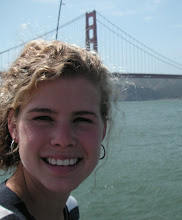Composition is important in making the image appealing as a whole. Paying attention to composition can make an otherwise simple image look dynamic and interesting. Composition is composed of several elements: the angle of the shot, the framing of the shot, where the points of interest are placed, color, and contrast.
Guidelines
The Digital Photography School recommends that you ask yourself these questions when planning a composition:
• What is the subject of this photo?
• Is there more than one subject? If so would it be better to capture them with multiple shots?
• What is the mood of the moment?
• What is going on in the background of this shot?
• Do I have time to pose my subject (and is it appropriate to do so) or do I need to shoot fast?
• Is the place I’m shooting in light or dark?
• Who else is taking photos of this subject? What angles are they taking shots from (sometimes they can give you ideas of what shots to take and sometimes they can give you hints as to what images EVERYONE is taking and inspire you to do something different)?
• Is my subject moving or still?
• Are there any patterns in the photo that I could work with?
More Specifically
These are just a few helpful hints. For more specific situations Digital Photography School and Photo Composition Articles give some more hints.
Fresh Angle
Instead of choosing the most obvious or sometimes the easiest angle to shoot from, consider trying something a bit different. Using a different angle can change the size of the subject (if you crouch down and shoot up, the subject looms over you and looks large) and the shading and contrast (when the sun hits the subject from a different angle). This can be achieved by lying or squatting on the ground or climbing on top of things or shooting from staircases to get above the subject.
 this example from Photo Composition Articles shows the importance of getting below the subject. Otherwise, this image would have consisted of several colorful umbrellas situated on a beach, but filling the frame with them and crouching to get below the umbrellas for a unique perspective makes the photo more interesting.
this example from Photo Composition Articles shows the importance of getting below the subject. Otherwise, this image would have consisted of several colorful umbrellas situated on a beach, but filling the frame with them and crouching to get below the umbrellas for a unique perspective makes the photo more interesting.Filling the Frame: Cropping
Cropping is important to do. When you are shooting an image, pay attention to what really belongs in the viewfinder and do not always count on cropping in the darkroom or on the computer. Instead of letting distracting things in the background compete with the subject for attention, declutter and get in close to the subject. Also sometimes filling the frame with the subject eliminates the possibility of something unwanted (like an ugly sign) entering into the frame. Other times, filling the frame gets rid of useless space that surrounds the subject and doesn't add anything interesting, and lets you focus in to detail. Oftentimes we do not need as much 'context' or setting in the background, zooming in will still allow some background and the place where the subject is can still be determined.
iStockPhoto provides an example of this that greatly increases the compositional value of the image. These strawberries look enticing and almost unidentifiable, something that this project on gloss strove to do.

Perspective and Dimensions
Instead of having landscapes and photos of people look one dimensional, try to think of ways to make the photo more alive. For example, when photographing a landscape, keep something in the foreground to give the sense of really being in that place at that time. When photographing a person, have them in action, or holding something towards you, in order to make them seem more alive. Also consider having movement or action in the image rather than standing still. Add something in the foreground or use depth of field and aperture tricks to set the subject apart from the wall.
The Digital Photography School provides an example of how adding foreground (achieved by kneeling) makes a scene more alive ad 3 dimensional than it would have looked if it were just a field of sunflowers and a line of trees all of uniform size.

To Sum Up
These are just some of the things that you can look to change to improve composition. The jist of it is to try to find a new angle or a more dynamic way to look at a scene. Usually, this is not found at eye level right when you walk up to something. As subjects and scenes cannot always be moved, you as the photographer have to move, horizontally and vertically to get a different view of something.


No comments:
Post a Comment